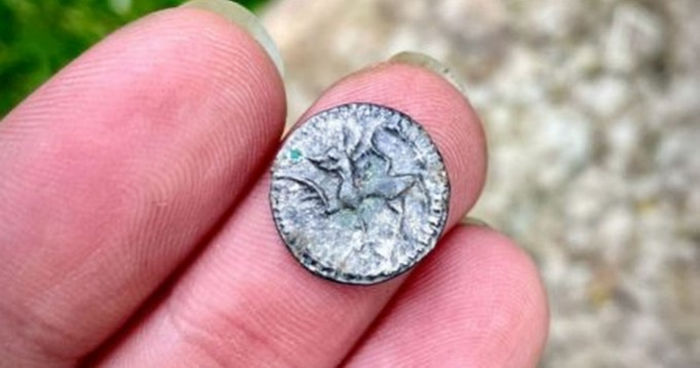Jan Bartek – AncientPages.com – While excavating on the cemetery site, near the ruins of Lindisfarne on the Holy Island, off the northeast coast of England archaeologists uncovered an ancient coin featuring a warrior king of Northumbria and a four-legged beast.
The coin was “issued during the rule of King Eadberht, who became king in AD 737, after his cousin Ceolwulf abdicated from the Northumbrian throne and took sanctuary at the monastery at Lindisfarne.

Holy Island, UK. Credit: Chris Combe – CC BY 2.0
On one side, the coin features a fantastical, four-legged beast. On the other, the name Eadbertus circles a small central cross.
Eadberht was the brother of the Archbishop of York, and after the king abdicated, he became a monk at the monastery at York,” the Chronicle Live UK reports.
According to Maiya Pina-Dacier, head of community at Dig Ventures, the ancient silver coin is in excellent condition.
Dig Ventures archaeologists excavate the cemetery yearly and this was their sixth annual excavation. The cemetery has been used for hundreds of years and though most burials are similar archaeologists have found some surprises.
“One is a possible shrine burial, in which an altar is placed over a high status grave, which is raised above ground level. A possible marble-like altar fragment was found nearby.
What is thought to be a chest burial has also been revealed. This is where an individual has been buried in a chest rather than a coffin.
The chest plate or lock was found for what is a type of burial found in places ᴀssociated with the Northumbrian church. This is the first to be uncovered on Lindisfarne.

A silver coin was found on Holy Island by the Dig Ventures team. Credit: Dig ventures
Another intriguing find has been part of a bone comb – with runes carved into it.
The runic writing is now being studied to see if it is a case of an individual carving their name into a comb which was valuable to them, “ the Chronicle Live UK reports.
See also: More Archaeology News
In addition to this, scientists have also unearthed part of a free-standing medieval cross thought to date from the 8th or 9th centuries. It is believed these stone crosses are among the first monumental public sculptures to be built in Britain since the Roman period. The Holy Island has most likely more archaeological treasures to reveal in the future.
Written by Jan Bartek – AncientPages.com Staff Writer





